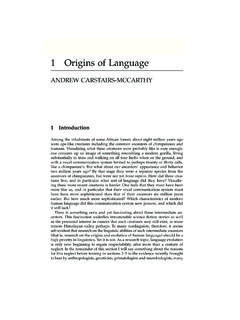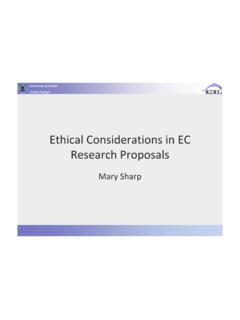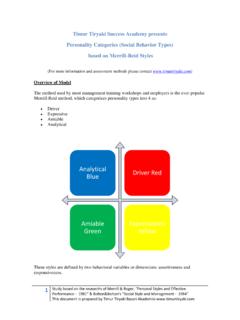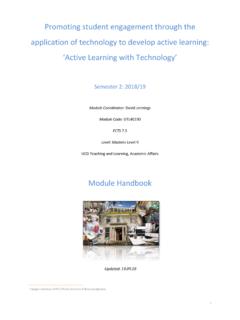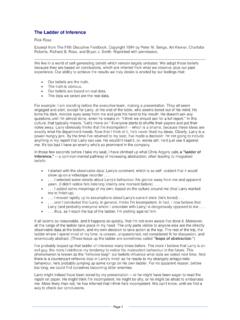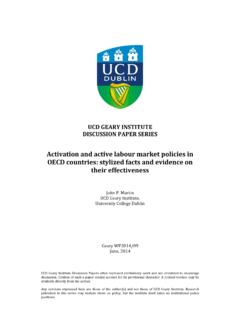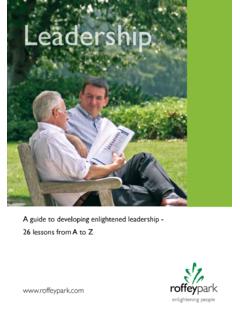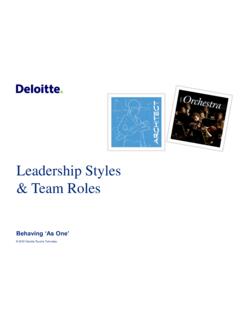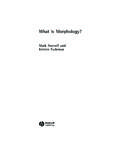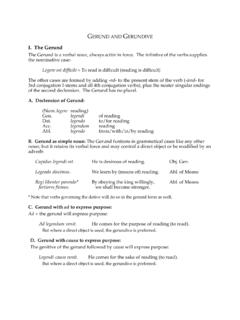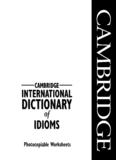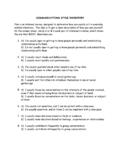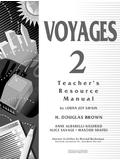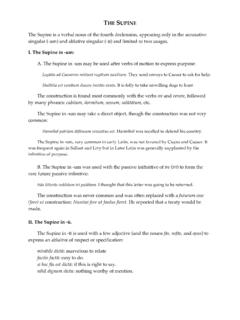Transcription of Taxonomy of Anderson et al (2001) and Bloom (1956).
1 Guide to Taxonomies of Learning outcomes The project team are most grateful to Dr. Geraldine O Neill, Centre for Teaching and Learning, for her help in the production of this guide Introduction With the introduction of modularisation, UCD has moved to a learning outcomes based approach to ensure that curriculum design evolves from a more teacher-centred (content) to a more student-centred (learning) focus. Identifying learning outcomes enables both the teacher and students to clearly identify what a student is expected to have achieved or have made progress towards achieving on completion of a module.
2 This short guide is designed to facilitate module coordinators in writing appropriate learning outcomes. It has been especially designed for use during the College of Arts and Celtic Studies and the College of Human Sciences module enhancement process. It is not designed to be prescriptive but rather may be a useful way of considering how to write meaningful outcomes for your modules. Learning taxonomies or classifications are commonly utilised as a way of describing different kinds of learning behaviours and characteristics that we wish our students to develop.
3 They are often used to identify different stages of learning development and thus provide a useful tool in distinguishing the appropriateness of particular learning outcomes for particular module levels within our Programmes. The most common and earliest of these is Bloom s Taxonomy (1956), adapted more recently by Anderson et al (2001). 1. Taxonomy of Anderson et al (2001) and Bloom (1956). This Taxonomy is similar to many others in its hierarchical nature: simply put the categorization implies implying that the earlier level, as a general rule, must be mastered before the next level.
4 The original Taxonomy has three parts (or domains) and these are the Cognitive, Affective and Psychomotor. The Cognitive domain has received most attention both in Anderson / Bloom s and others taxonomies. The revised Bloom s Cognitive domain has a hierarchy of categories that capture the process of learning, from simply remembering information to creating something new: Remember Understand Apply Analyze Evaluate Create. To these levels has been added a knowledge dimension (factual conceptual procedural metacognitive). Table 1 below indicates the structure of Bloom s revised Taxonomy and some verbs that might be useful in writing learning outcomes appropriate to particular kinds of skills that you wish your students to demonstrate.
5 For other examples see: #table . Table 1: Anderson s et al (2001) Cognitive Revised Domain Remember Understand Apply Analyze Evaluate Create Factual Knowledge List Summarize Classify Order Rank Combine Conceptual Knowledge Describe Interpret Experiment Explain Assess Plan Procedural Knowledge Tabulate Predict Calculate Differentiate Conclude Compose Metacognitive Knowledge Appropriate Use Execute Construct Achieve Action Actualise Krathwohl s Taxonomy of the Affective Domain was developed from Bloom s original and is the best known of the affective domains, it includes concepts such as Receiving ideas.
6 Responding to ideas, phenomena; Valuing ideas, materials; Organization of ideas, values; Characterisation by value set (or to act consistently in accordance with values internalised). The learner moves from being aware of what they are learning to a stage of having internalised the learning so that it plays a role in guiding their actions. We expect graduates of our colleges to develop the ability to respond with a highly developed value system to the world around them and in expressing this kind of outcome, we can use affective domain framework.
7 The affective domain is certainly applicable in Arts and Human Sciences, as it captures the idea of students learning the value of what is being taught. Educators can expect that students learn to value and appreciate literature, music, visual art, culture etc as part of their learning about them. It is normal for us to expect students to come to appreciate the significance of many of the ideas and topic we are teaching rather than just mastering skills. The affective domain is one area where we can find the vocabulary to help express this expectation.
8 (see ) (Seels & Glasgow, 1990). Table 2: Affective Domain Level Characteristic Some Verbs Receiving Developing awareness of ideas and phenomena Ask Follow Reply Accept Prefer Responding Committing to the ideas etc by responding to them Answer Recite Perform Report Select Follow Explore Display Valuing Being willing to be seen as valuing certain ideas or material Justify Propose Debate Relinquish Defend Initiate Organisation and Conceptualisation To begin to harmonise internalised values Arrange Combine Compare Balance Theorize Characterisation by value To act consistent
9 With the internalised values Discriminate Question Revise Change An example of a useful Psychomotor domain is Dave s (1970) and Ferris and Aziz s (2005) adaptation of Bloom s original Taxonomy . The key categories in this competence capture the development in learning from initial exposure to final, unconscious mastery. While the Taxonomy deals largely with motor-area skills and the mastery of them, it is also applicable to the Colleges of Arts and Celtic Studies, and Human Sciences. Many of the skills and attributes we seek to impart to our students involve just this kind of development.
10 This may be the more obvious ones such as performing on a musical instrument or being part of a successful excavation, but included here are also such things as the development of fluency in a language as well as the key transferable skills of encoding and decoding information in graphic forms, such as tree diagrams and bar charts along with the abiloity to produce accurate maps. The key stages and a brief explanation are shown below in table format. For another view on the categorisation and organisation of the psychomotor domain, you can vist the website # Bloom 's%20taxonomy%20overview).
